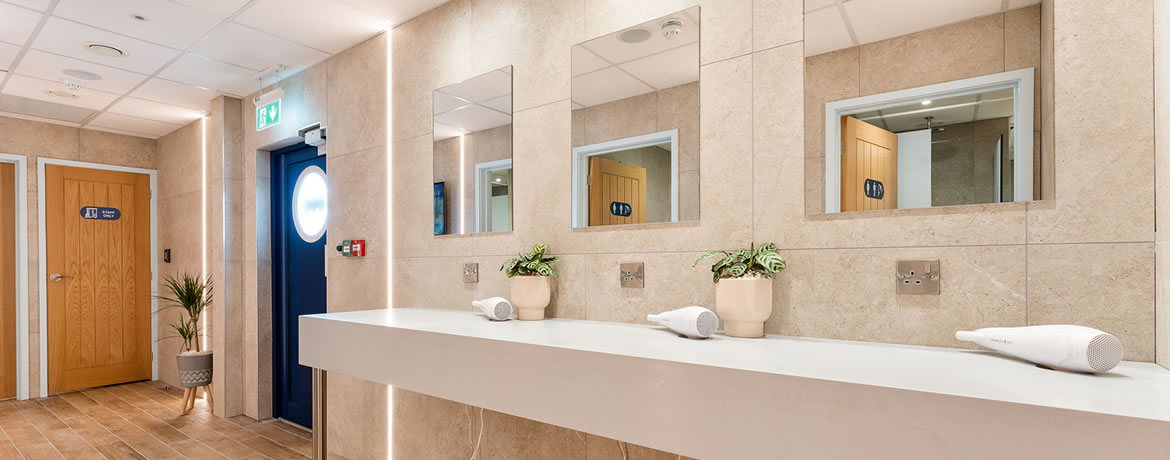How To Choose A Toilet

Choosing the right toilet can be tricky. There are just so many things to factor into your decision. As well as looking at the available space, site managers will also be considering durability, whether it is economical with water consumption, and how easy repairs or replacements are likely to be.
But there are a number of options available in the commercial marketplace today, spanning different dimensions, controls and designs. These days, washrooms are no longer a clinical and functional room in a building. Now they are carefully curated spaces where the interior design is as carefully planned as a boutique hotel’s lobby.
The different types of toilets to choose from
When selecting your new commercial toilets, it’s important to understand what the main options are:
Each of these options has quite distinct design attributes to them, and each one requires a different approach to installation. If you would like to explore these types of toilets further, read over our earlier online feature - What are the different types of toilets?

Replacing like for like
For many businesses, the replacement of an existing toilet is going to be a like-for-like affair. It can be much easier to replace an old toilet with one very similar because then the main water feed and waste pipe are unlikely to need much adjustment. However, if you opt for a new type of toilet that requires a DUCT set where the cistern is concealed behind a false wall, then the installation process requires more time and planning. A first point of call would be to look for the same make and model for swift replacement. If this isn’t possible, then choosing the same design is the way to go. So if you have a back to wall toilet, make sure you order a back to wall toilet for the replacement.
The best toilet for easy cleaning
Naturally, a lot of site managers are looking to streamline their washrooms and make them more efficient. Following the coronavirus pandemic, many businesses are even more invested in improving hygiene and the ease of cleaning in these spaces too. Your best options for easy clean washrooms are always going to be where the trap and waste are concealed. We are looking for toilets that have a reduced exposed surface area, and where there are no awkward grooves where bacteria can harbour. For this reason, back to wall and wall hung toilets are the go-to choice. Both of these options use a DUCT set to create an integrated plumbing system. This means a thin false wall is created within which houses the cistern, waste pipes and mains feed. This duct set is then either tiled or most commonly, fitted with IPS panels that are flush, smooth and easy to wipe down. What’s left is just the toilet pan itself. Wall hung toilets have a slight edge over back to wall toilets in this field as they are mounted only to the wall. This means the floor runs completely to the edge of the cubicle, making the room appear bigger, but also much easier to mop and maintain.
How to choose a toilet seat
Toilet seats come with the toilet pan, but there are a number of shapes and sizes on the market. Some designs offer a more squared toilet seat design, while others can be more oval. This all depends on how contemporary the design is, and what aesthetic you are going for. However, there are many options available where a replacement toilet seat can be fitted quite easily. This is because the fitting holes on the pan are quite large and allow for a little adjustment. If this is important to you, you can check with a member of the team for dimensions and compatibility.
Learn more about different types of toilet seats here.

Disabled toilets
Disabled toilets require a completely different approach. For starters, you can’t just install any old toilet, it needs to be a specified disabled toilet. This means the pan sits at a greater height to make access easier for wheelchair users. You may also find that it comes with a backrest. Disabled washrooms vary, but a full Document-M compliant disabled washroom will require a set of grab rails, a lever-operated tap and a washbasin, all fitted to exacting dimensions.
If you would like further advice on selecting the best commercial toilets for your needs, or to discuss our supply and fit service, please get in touch on 01202 650900.
You’ll also find other helpful blogs related to toilets and our other products, including:
MORE TO EXPLORE IN Related Posts

Armitage Shanks Sandringham 21 Close Coupled Toilet with Lever or Push Button Flush (E8963)
As low as £97.20 £81.00

Armitage Shanks Sandringham 21 Magnia Low Level Toilet
As low as £81.60 £68.00

*OUT OF USE* RAK Origin Back To Wall Toilet
As low as £104.40 £87.00







